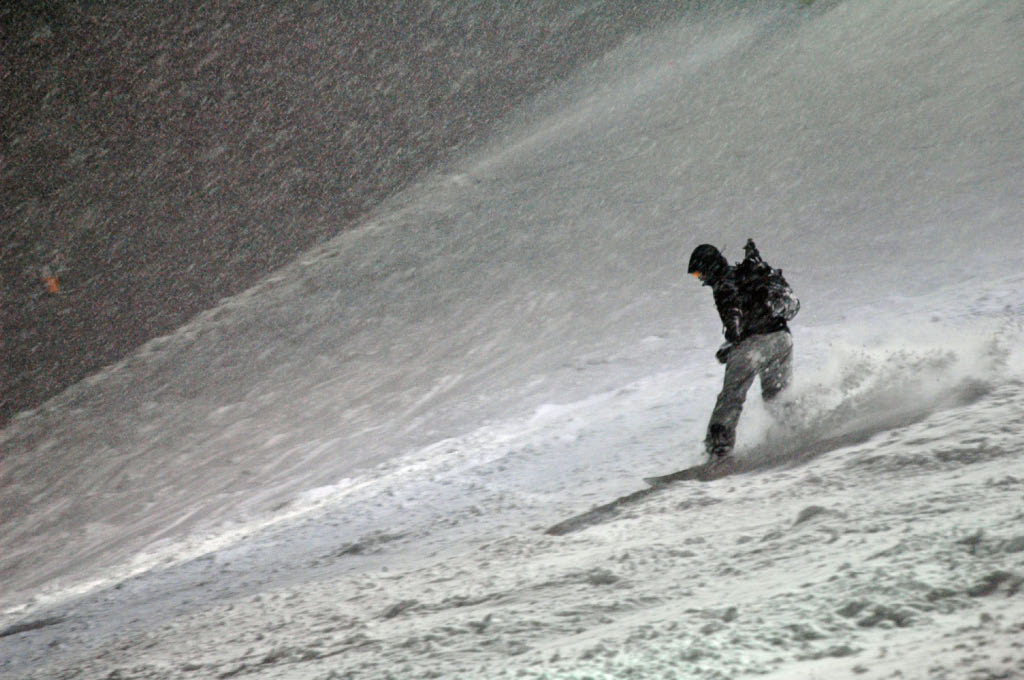Today’s office is a guest house half way up a mountain in Japan’s northern island of Hokkaido. I’m here with a research colleague to catch up on the last year, figure out where we want to go in 2006 and in between discussions make the most of what the mountain has to offer. In the village outside it’s minus 10 and for the third night in a row it’s dumping it down. The building we are staying in was initially a disappointment – semi-industrial in a run-down-damp sort of way, but after 3 days the room starting to look like home. It helps that that every evening the staff leave a thermos of hot water in the room (we happen to have some decent freshly ground coffee), that there is a spacious open air onsen 5 minutes away, and that someone nearby has left their Wi-Fi unsecured, bless them.
I’m tucked up in bed, and on the floor to my left a digital camera has been broken down into its composite parts and is (hopefully) drying out after being covered in snow. I’m familiar with the challenges of capturing data in difficult conditions – but tonight presented new hurdles. A combination of the cold – around minus 18 on the mountain, horizontal in-your-face winds, the need to remove outer glove-wear to be able to properly handle equipment, and the constant heavy snowfall meaning that after 20 seconds or so a new snow-drift has built up on the edges of the lens. Realistically the only way to clear the camera lens of snow flakes was to lick it whilst avoiding having my tongue stick to its metal frame (to the Finns reading this, yes, I know the solution to removing frozen body parts from metal I’m just not sufficiently physically agile, and am certainly not prepared for my colleague to do the deed). Earlier tonight I learnt that the frozen residue left by my tongue can serve as an OK if somewhat inaccurate soft focus lens filter (top photo). In all I’m satisfied that the camera continued to work and that photos and memory card survived the cold.
User experience practitioners often use personas and scenarios to understand and communicate how a product will be used. But what happens when use falls outside acceptable limits? What are acceptable limits? Is it reasonable to expect a camera to function in these conditions? Is it reasonable to expect your phone to work after being run over by a car? Is it reasonable to carry your iPod Nano in your pocket without it scratching?
It’s telling that on my last visit to Yodobashi Camera (one of the largest general electronics stores in Japan), consumers buying iPod products were handed a crudely photocopied sheet explaining whom to call in the event of it breaking. This is hardly a show of faith in the products they are selling and I presume is a result of fielding so many consumer queries related to perceptually faulty iPods. (As a comparison I’ve bought dozens of other mainstream electronics from the same store none of which included similar information). The law-suits over scratched iPod Nanos shows there is an obvious mis-match for acceptable boundaries of use between (some) consumers and the manufacturer.
There are two trends that are likely to considerably shift consumer perception of what constitutes acceptable use: miniaturization; and the availability of flexible componentry. Once objects reach a certain size the range of places that they can be comfortably carried and stored increases – making it feasible for it to be carried without significant extra burden for the user, comfortably placed in a pocket or tucked in amongst other objects in a bag. Objects will be carried and stored in locations and used in contexts which did not previously need to be considered in use cases. It is more comfortable to carry a flexible object next your (soft, fleshy, human) body than a hard object. Smart use of flexible components will increase the range of objects can be comfortably carried in pockets or next to the skin – expanding the range of use case scenarios for many products and along with it, user expectations.
